The Sport of Polo
THE GAME: A game is 6 chukkers (periods) each timed to last 7 and a half minutes. Play is continuous (and the clock runs) until a whistle is blown in case of a foul, injury, or at umpires’ discretion. A player may call time-out if he has broken tack ( the horse’s bridle, saddle etc.) or is injured. No time-out is allowed for changing horses mid-chukkar or replacing broken mallets, although a player may do so at any time. Play starts with the throw-in of the ball by the umpire at center field. Thereafter each chukka begins with the ball tossed in by the umpire where play stopped or back at center field if a goal was scored.
PLAYERS: There are four players on each team. They are called No.1, No.2, No.3 and No.4 (or back). Once play commences the players pair off~ No.1 with the opposing No.4, No.2 with the No.3, etc. Each player has two basic objectives: one is to mark his opposing number in defense and the other is to get free of him in attack. The players move up and down on the field in a line front-to back rather than the usual side to side formation of other team sports. That way if a player overruns the ball, a teammate should be following behind to pick up the play. Due to the speed of the game, it is common and necessary for each player to interchange positions with his fellow players.
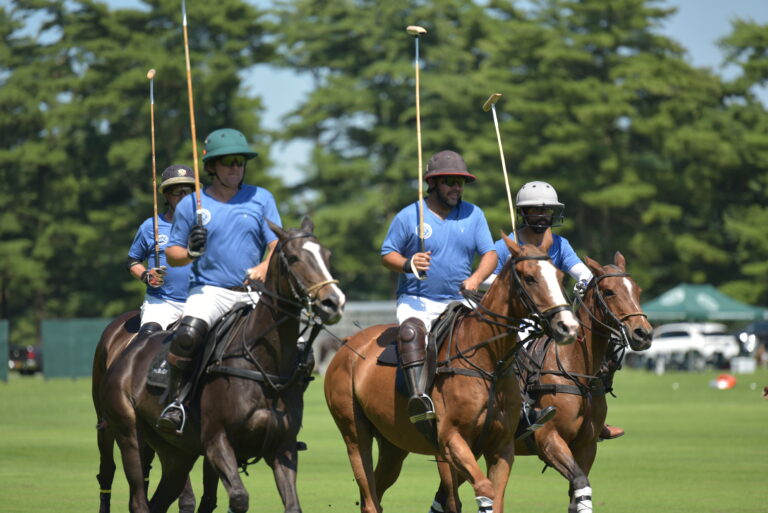
FIELD: A polo field is 300 yards long and 160 yards wide (10 acres or nine football fields). The goal posts, which are collapsible on impact, are 8 yards apart.
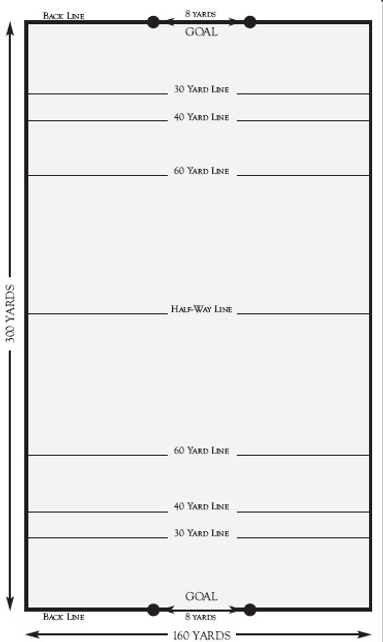
UMPIRES/FLAGGERS: Two mounted umpires on the field of play in black and white shirts. There is also a referee who watches the game from off the field and casts the deciding vote if the umpires disagree. A “flagger” stationed behind each goal signals with an up-in-the-air flag for a goal and a low flag for a missed goal.
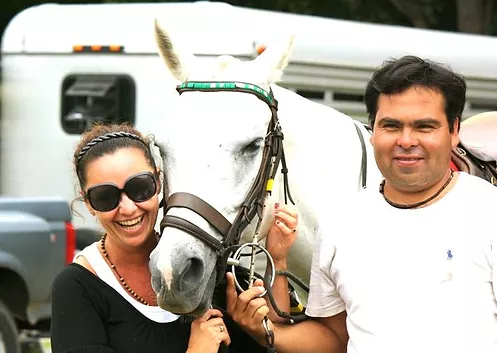
HANDICAPS: Player rating system from -2 to 10 goals. This rating is based on a players’ hitting, horsemanship and teamwork. A player’s rating has no direct relationship to the number of goals he may score per game. Players’ handicaps are added up for each team and, if one team is lower, it starts with that number of goals to its advantage.
TEAM POSITIONS:
No.1 is a forward, the most likely on the team to score goals.
No.2 basically, also, a forward and marks the opposing No.3 who is generally the best player on the team.
No.3 the strongest player on a team. The pivot who sets up the defense and starts off the attack. His position relates to a center in basketball.
No.4 is the back, the last in line of defense and is usually a long hitter, who takes the hit-ins. His defense also depends on his ability to hit strong backhands.
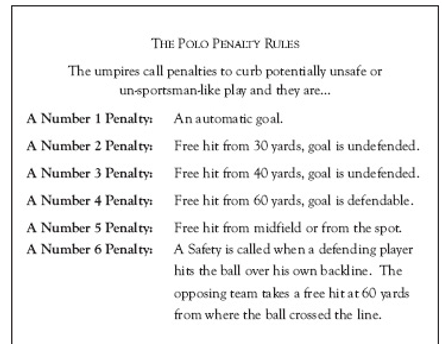
PONIES: No limit to size, even though called a pony. Most ponies are between 15-15.3 hands, (a “hand” equals 4”). A player will change his pony after each chukkar and may play the same pony again with a minimum of one chukkar between. At a game there are 40-50 ponies for the 8 players.
GROOMS: A great groom is essential in polo. They are charged with caring for the polo ponies, training the horses and transporting them to the game. They will watch the horses performance on the field and make adjustments in their training or tack as necessary to bring out the horses best performance.
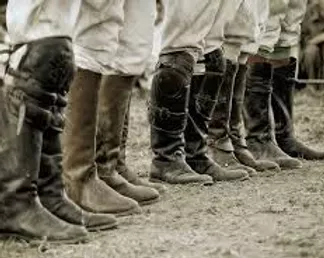
EQUIPMENT: Mallets are flexible bamboo shafts with hard wood heads. Length of the stick varies between 50 and 53 inches depending on the height of the pony. The ball is hit with the face of the mallet not the small ends as in croquet. Only right-handed play allowed. Helmets are compulsory (face guards optional) and knee pads are standard wear. Whips and spurs optional. Team shirts and white breeches are traditional.
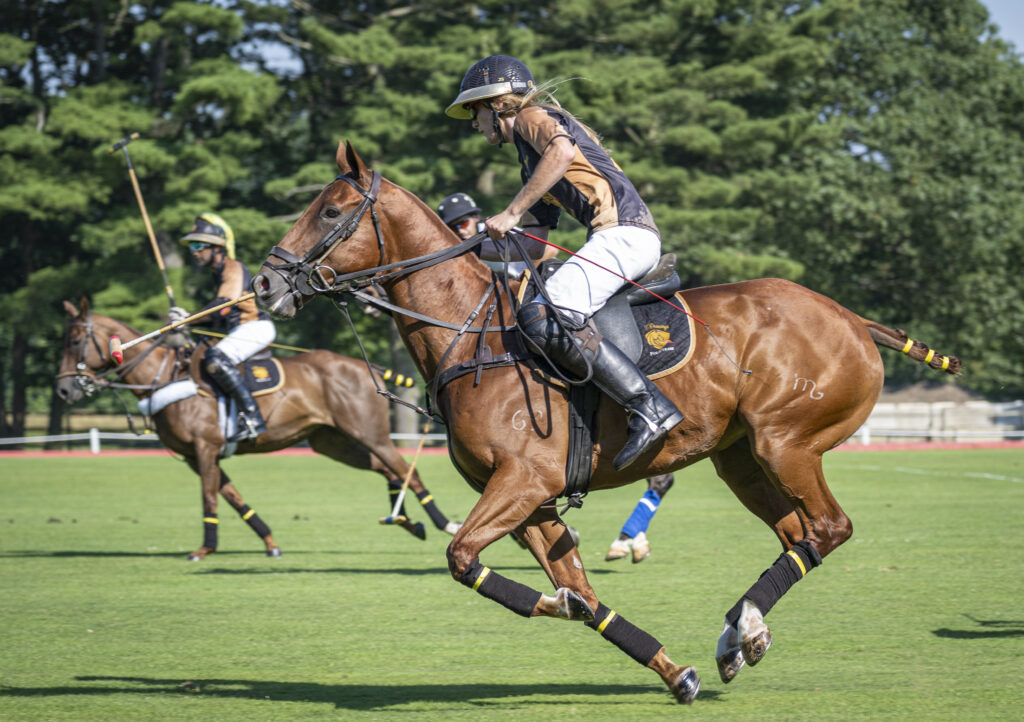
BALLS: Approximately 31/2” diameter and made of plastic for grass polo and is a larger ball similar to a small soccer ball for arena polo.
Mailing Address
255 Executive Drive, Suite 209,
Plainview, NY 11803
Events & Tickets
Mailing List